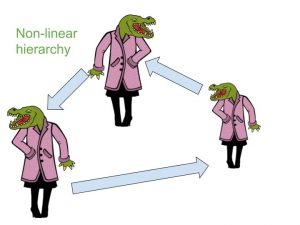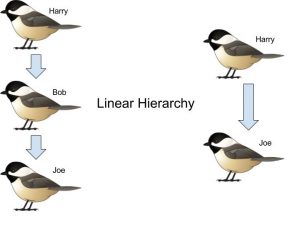Some animals have non-linear hierarchies, where one individual dominates others but he himself can also be dominated. In contrast, dominance hierarchies in black-capped chickadees are linear, where one individual dominates all the others; a second dominates all but the first, and so on. Aaron Harvey ’17 is carrying out a project at the Vassar Farm and Ecological Preserve (VFEP) to establish hierarchies of the resident chickadee populations. Determining who is dominant and who is submissive between two chickadees requires designating a “win” and a “loss.” Behaviors such as chasing another bird away from a feeding station, resisting an attack, or obtaining a submissive reaction from another bird count as “wins.” Measuring wins as a percent of total interactions can help determine dominance rank. We are doing this by reviewing videos taken by a mounted Kodak Pixpro of chickadees interacting at feeding platforms. Potential dominance behaviors we are looking for include:
-
Recent Posts
Recent Comments
- Pat Irvin on Canada Goose Vocalizations
- Gloria on Vocalizations and Singing Behavior in the Black-Capped Chickadee (Poecile Atricapillus)
- Scott Baker on The Northern Cardinal(Cardinalis cardinalis) Song
- Aj on The Blue Jay – Vocalizations
- Stephanie Thomas on The Biology of the Barn Owl (Tyto alba)
Archives
- June 2024
- May 2024
- August 2023
- May 2023
- January 2023
- August 2022
- July 2022
- May 2022
- April 2022
- March 2022
- February 2022
- May 2020
- March 2020
- December 2019
- November 2019
- October 2019
- September 2019
- February 2019
- May 2018
- February 2018
- January 2018
- December 2017
- November 2017
- October 2017
- September 2017
- June 2017
- May 2017
- April 2017
- March 2017
- December 2016
- November 2016
- October 2016
- September 2016
- August 2016
- July 2016
- June 2016
- May 2016
- April 2016
- March 2016
- February 2016
- December 2015
- November 2015
- October 2015
- September 2015
- August 2015
- July 2015
- June 2015
- May 2015
- April 2015
- March 2015
- February 2015
- January 2015
- December 2014
- November 2014
- August 2014
- July 2014
- June 2014
- May 2014
- April 2014
- March 2014
- February 2014
- December 2013
- November 2013
Categories
Meta




